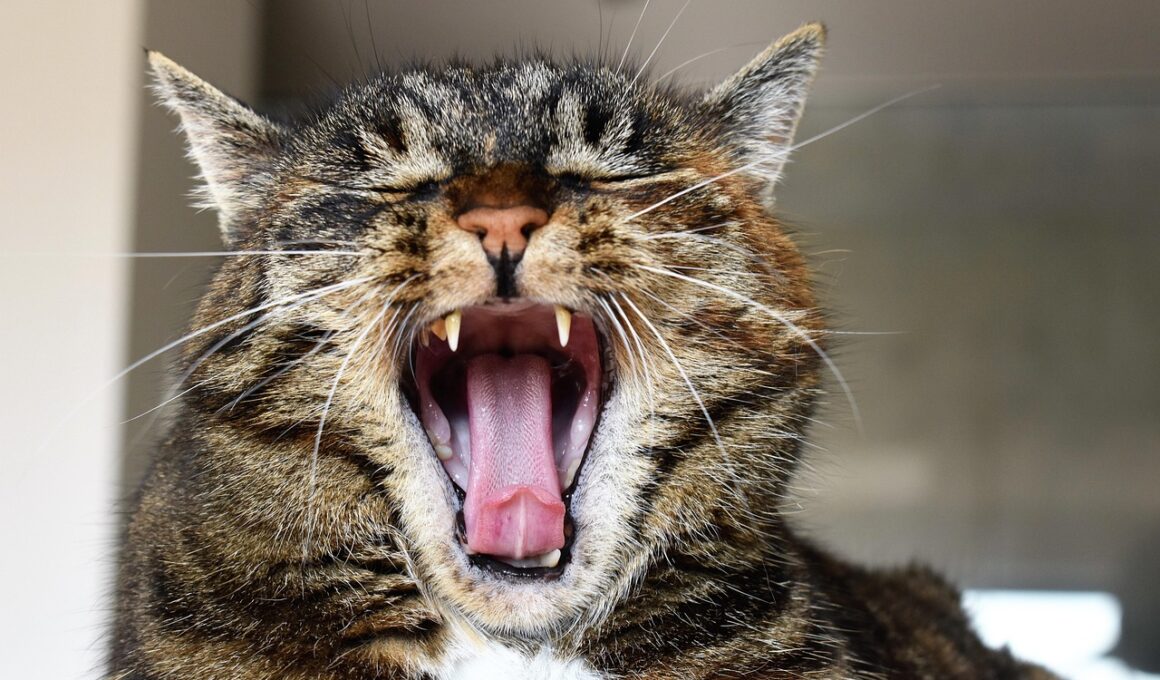Diagnosing Mouth Ulcers in Cats: What Tests Are Needed?
Mouth ulcers in cats can be concerning for cat owners and often signal underlying health issues. Determining the cause will require thorough testing by a veterinarian. Understanding the different types of tests available can be beneficial in assessing your cat’s condition. A detailed approach is taken to ensure accurate identification of the root cause of the ulcers. Malnourishment, infections, or dental diseases could all contribute to the development of ulcers. It’s essential to gather a comprehensive history, including medications or changes in diet. The veterinarian will perform a full physical examination, seeking signs of other health issues. You may notice symptoms like drooling, difficulty eating, or bad breath. There may be a need for further diagnostics to rule out viruses such as feline herpesvirus or calicivirus. A sampling of the ulcer could be performed if needed, enabling laboratory analysis to pinpoint the specific cause. Routine blood tests may also be part of the diagnostic process to check for systemic infections or organ dysfunction. Being proactive can lead to successful outcomes in treating your cat’s mouth ulcers.
Once your veterinarian has completed the initial examination and history collection, they may recommend additional diagnostic tests to further investigate the mouth ulcers in cats. Blood tests often serve as one of the primary forms of diagnostics. These tests can reveal underlying infections or inflammatory conditions that might be contributing to the ulcer formation. In particular, blood work can help identify high white blood cell counts or liver enzyme levels, which may indicate more extensive health issues. Another critical test that may be suggested is a biopsy of the mouth ulcer. This process involves taking a small tissue sample from the affected area for laboratory analysis. A biopsy is especially useful if the ulcers are persistent or if there’s a suspicion of cancerous growths. In some instances, your vet may suggest imaging tests, such as X-rays or ultrasounds, to gain a clearer view of your cat’s oral and maxillofacial structures. This can help identify any underlying dental issues that could be contributing to the problem. Overall, a combination of these tests provides a clearer picture of your cat’s health.
Another tool in diagnosing mouth ulcers in cats is the use of dental radiographs or X-rays. These images can reveal hidden dental problems that may not be visible through external examination alone. Dental disease, including periodontal disease, is common in cats and can lead to significant pain and discomfort. X-rays can help identify bone loss around teeth, abscesses, or other pathological changes. Proper dental care and regular check-ups are crucial for early detection of such issues. Radiographs can also identify any retained teeth or dental nerve related issues in cases of chronic mouth ulcers. All in all, while blood work and physical examination are essential components of diagnosis, imaging serves as a crucial adjunct for comprehensive assessment. Collectively, these testing methods contribute valuable information to the veterinary team, allowing for a more effective treatment plan. Furthermore, having an accurate diagnosis minimizes trial-and-error approaches to treating the ulcers. Remember, timely treatment of detected issues can prevent further complications and enhance your cat’s quality of life.
Necessity of Culture and Sensitivity Testing
In cases where bacterial infection is suspected, culture and sensitivity testing may be performed. This specialized test helps in identifying the specific bacteria causing the infection and determines which antibiotics are effective against it. A sample may be taken from the oral cavity, the infected ulcer, or any impacted areas around the mouth. Identifying the pathogen is essential because different bacteria have varying resistance to antibiotics, and an effective treatment can dramatically improve healing times. Additionally, this testing guides the veterinarian in choosing the most effective course of treatment, thus helping to alleviate your cat’s symptoms faster. Culture and sensitivity testing can be particularly helpful for cats that have recurrent mouth ulcers, as it can reveal persistent infections that may have been otherwise overlooked. Undertaking these tests ensures that a targeted approach to treatment is being pursued. This contributes to the overall well-being of the cat, which is a primary goal of veterinary care. Your vet will discuss the pros and cons of this testing and include it as part of a comprehensive diagnostic approach.
Finally, in some cases where infectious or systemic causes of mouth ulcers are suspected, more advanced tests may be warranted. For instance, advanced diagnostic tests like PCR (Polymerase Chain Reaction) can detect viral infections, such as feline herpesvirus, in a non-invasive manner. PCR testing has become a popular method for detecting genetic material from pathogens, enabling precise identification of specific infections affecting your cat. Additionally, a thorough evaluation of the cat’s immune status may be performed, particularly in cases of recurrent or resistant mouth ulcers. Immune system disorders can contribute significantly to ulcer development. If a systemic condition, such as autoimmune diseases, is suspected, your vet may suggest further blood tests to assess immune function. Overall, understanding the various tests involved in diagnosing mouth ulcers can streamline the treatment process. Being well-informed allows cat owners to participate actively in their pet’s veterinary care, ultimately leading to better health outcomes. Thus, discussing the necessity of these advanced tests with your veterinarian is crucial for comprehensive care.
Importance of Regular Veterinary Check-Ups
The significance of regular veterinary check-ups cannot be overstated when it comes to maintaining your cat’s oral health. These visits provide opportunities for early detection of potential problems, including mouth ulcers. Regular dental cleanings and examinations allow for the identification of emerging dental issues before they escalate. Routine care can help prevent the onset of dental diseases that lead to pain and discomfort. An ongoing vet relationship allows for the establishment of baseline health measures, making it easier to identify when something deviates from normal. Most importantly, veterinary visits are an opportunity for you to ask questions and seek advice regarding your cat’s diet, dental care, and overall well-being. Educational resources provided during these visits can enable owners to take proactive measures in oral hygiene for their cats. Dental fractures or erosions usually lead to ulcers if left untreated. Your veterinarian may recommend a tailored dental care routine that fits your cat’s specific needs. Engaging with your vet is vital for a health-conscious approach to feline dental care.
In conclusion, diagnosing mouth ulcers in cats requires a multifaceted approach involving various tests to determine underlying causes. Understanding the types of diagnostic tools available empowers cat owners to advocate for effective veterinary care. Each test plays a critical role, from blood profiles to advanced imaging, in developing a thorough diagnosis. Early intervention is paramount, as untreated ulcers can lead to further health complications. Therefore, it’s essential to engage actively in your cat’s health and recognize signs like drooling or painful eating. Being vigilant and addressing oral health concerns promptly can significantly improve your cat’s quality of life. Ensure you follow your veterinarian’s advice and keep up with regular dental check-ups for optimal feline oral health. If your cat requires advanced testing or refers you to a specialist, consider it a vital step in ensuring your pet gets the care they need. With the right support and diagnostics, most mouth ulcers in cats can be effectively treated. Ongoing education and awareness contribute to a better understanding of feline dental health, ultimately benefiting your beloved companion.
Furthermore, maintaining a healthy diet is crucial for your cat’s overall dental health. A diet rich in essential nutrients supports the immune system and oral tissues, which can help prevent the development of mouth ulcers. When feeding your cat, consider incorporating dental treats or specialized dental diets designed to promote oral health. Providing clean drinking water ensures proper hydration and can also help wash away food particles and bacteria. Avoiding crunchy or dry snacks that may damage the oral cavity can further minimize risks. Keeping up with routine dental care, such as brushing your cat’s teeth, is incredibly beneficial. Doing so prevents tartar buildup, which can lead to gum disease and other oral ailments. In addition, considering the application of dental sealants can protect existing dental health. Staying informed about feline dental care allows for timely interventions and improves your cat’s overall well-being. Thus, recognizing the importance of balancing diet and dental hygiene in your cat’s life is essential. Also, observing behavioral changes like reluctance to eat or playful aggression can alert you to potential dental issues. A proactive approach ultimately leads to a healthier and happier feline companion.


